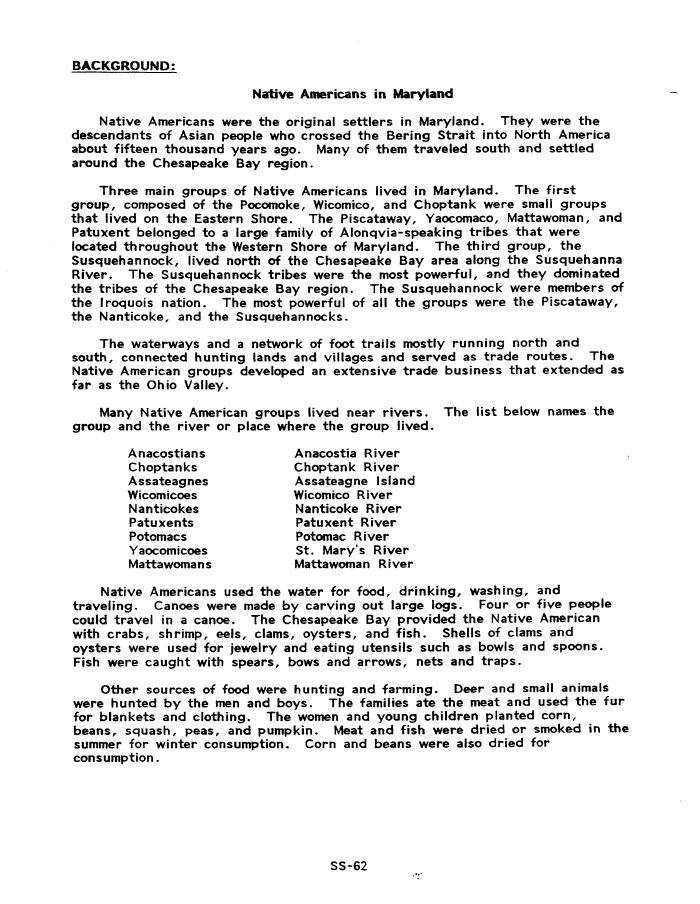 |
||||
|
TASK FORCE TO STUDY THE HISTORY AND LEGACY OF SLAVERY IN MARYLAND (Final Report) 1999/12/31 MdHR 991422 MdHR 991422, Image No: 212 Print image (68K) |
 |
||||
|
TASK FORCE TO STUDY THE HISTORY AND LEGACY OF SLAVERY IN MARYLAND (Final Report) 1999/12/31 MdHR 991422 MdHR 991422, Image No: 212 Print image (68K) |
| BACKGROUND: Native Americans in Maryland Native Americans were the original settlers in Maryland. They were the descendants of Asian people who crossed the Bering Strait into North America about fifteen thousand years ago. Many of them traveled south and settled around the Chesapeake Bay region. Three main groups of Native Americans lived in Maryland. The first group, composed of the Pocomoke, Wicomico, and Choptank were small groups that lived on the Eastern Shore. The Piscataway, Yaocomaco, Mattawoman, and Patuxent belonged to a large family of Alonqvia-speaking tribes that were located throughout the Western Shore of Maryland. The third group, the Susquehannock, lived north of the Chesapeake Bay area along the Susquehanna River. The Susquehannock tribes were the most powerful, and they dominated the tribes of the Chesapeake Bay region. The Susquehannock were members of the Iroquois nation. The most powerful of all the groups were the Piscataway, the Nanticoke, and the Susquehannocks. The waterways and a network of foot trails mostly running north and south, connected hunting lands and villages and served as trade routes. The Native American groups developed an extensive trade business that extended as far as the Ohio Valley. Many Native American groups lived near rivers. The list below names the group and the river or place where the group lived. Anacostians Anacostia River Choptanks Choptank River Assateagnes Assateagne Island Wicomicoes Wicomico River Nanticokes Nanticoke River Patuxents Patuxent River Potomacs Potomac River Yaocomicoes St. Mary's River Mattawomans Mattawoman River Native Americans used the water for food, drinking, washing, and traveling. Canoes were made by carving out large logs. Four or five people could travel in a canoe. The Chesapeake Bay provided the Native American with crabs, shrimp, eels, clams, oysters, and fish. Shells of clams and oysters were used for jewelry and eating utensils such as bowls and spoons. Fish were caught with spears, bows and arrows, nets and traps. Other sources of food were hunting and farming. Deer and small animals were hunted by the men and boys. The families ate the meat and used the fur for blankets and clothing. The women and young children planted corn, beans, squash, peas, and pumpkin. Meat and fish were dried or smoked in the summer for winter consumption. Corn and beans were also dried for consumption. SS-62 |